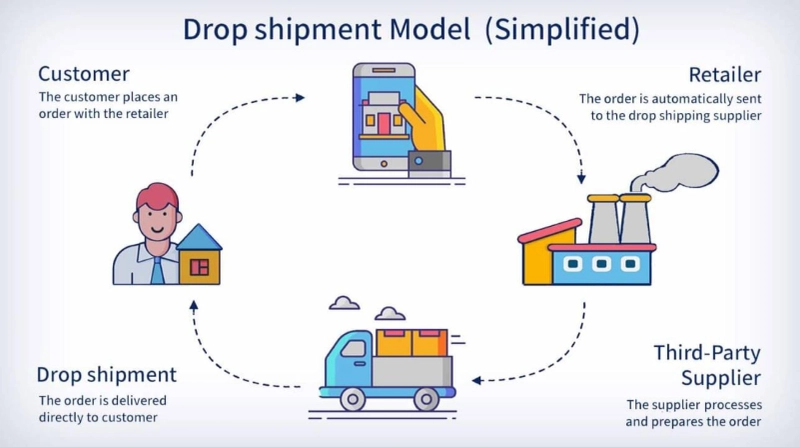Introduction: Dropshipping has become a popular and accessible way to start an e-commerce business without the need for a large inventory or significant upfront investment. This step-by-step guide will walk you through the process of setting up your dropshipping venture, from choosing a niche to managing customer orders.
Step 1: Market Research and Niche Selection Before diving into dropshipping, conduct thorough market research to identify potential profitable niches. Consider factors like product demand, competition, and target audience preferences. Choose a niche that aligns with your interests and has the potential for growth. You can check websites like stuffly.co in order to see what is selling fast on amazon.
Step 2: Choose a Reliable Supplier Selecting the right supplier is crucial for your dropshipping success. Look for reputable suppliers with a track record of timely shipping and high-quality products. Platforms like AliExpress, Oberlo, and SaleHoo offer access to a wide range of suppliers and products.
Step 3: Set Up Your E-Commerce Store Create your e-commerce store using popular platforms like Shopify, WooCommerce, or BigCommerce. Customize the design to reflect your brand identity, and ensure the website is user-friendly and easy to navigate.
Step 4: Add Products to Your Store Integrate your chosen supplier's products into your store using the provided tools or plugins. Write compelling product descriptions and use high-quality images to entice potential customers.
Step 5: Implement Pricing Strategies Determine your pricing strategy carefully. Account for product costs, shipping fees, and other expenses while ensuring your prices remain competitive in the market. Remember to factor in a reasonable profit margin.
Step 6: Marketing and Promotion Develop a comprehensive marketing plan to drive traffic to your store. Utilize social media, content marketing, email campaigns, and search engine optimization (SEO) to attract potential customers. Engage with your target audience and build a loyal customer base.
Step 7: Manage Customer Orders As orders come in, forward them to your supplier for fulfillment. Ensure smooth communication with your supplier to avoid delays or stockouts. Keep your customers updated on the status of their orders and provide excellent customer service.
Step 8: Monitor and Optimize Regularly track your sales, customer feedback, and website performance. Analyze the data to identify trends and opportunities for improvement. Continuously optimize your store, product offerings, and marketing strategies to enhance your dropshipping business.
Conclusion: Starting a dropshipping venture can be an exciting and rewarding experience. By following this step-by-step guide, you'll be well on your way to building a successful e-commerce business with minimal risk and maximum potential for growth. Remember to stay adaptable and always strive to meet your customers' needs for long-term success in the competitive world of dropshipping.


